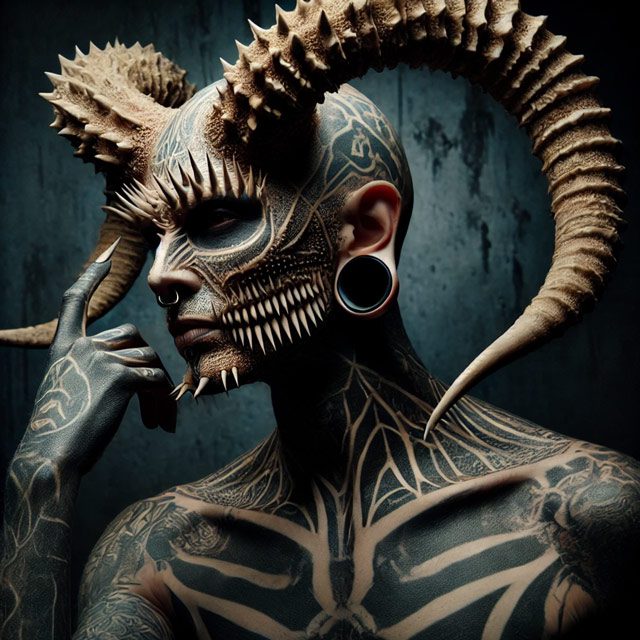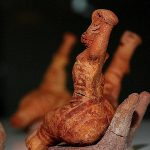
Body modification, in its most extreme forms, is both fascinating and controversial. For centuries, humans have transformed their bodies, sometimes in ways that push the limits of what most of us would consider “normal.” From ancient rituals to modern-day piercing and tattoo trends, body modification has deep cultural roots that go far beyond aesthetics. But when you step into the world of extreme body modification, you’re not just talking about tattoos and piercings anymore. You’re entering a space where the body becomes an art canvas—one that can shock, inspire, or horrify. Let’s dig deep into the dark side of body modification and explore its complex history and cultural influence.
The Roots of Body Modification in Ancient Cultures
Body modification is not some modern-day invention. Ancient civilizations around the world practiced various forms of body alteration, many of which were extreme by today’s standards. Take the Maya, for instance. They practiced cranial deformation by binding the heads of infants to elongate the skull, which was seen as a symbol of beauty and social status. The Aztecs, on the other hand, pierced their lips, noses, and ears, not for fashion, but as part of religious rituals and displays of power.
In African tribes, scarification has been a long-standing tradition. Raised scars, created by cutting the skin and allowing it to heal in a particular way, signify everything from adulthood to tribal affiliation. It’s a visual language—one not spoken but seen and understood within the culture. In the same way, foot-binding in ancient China served as a status symbol for women, even though it caused severe deformities and pain.
These historical practices demonstrate that body modification has always been about more than just changing the body. It’s tied to identity, status, spirituality, and beauty standards that differ from culture to culture. Yet, while some of these traditions have faded over time, others have evolved into modern practices that carry their own cultural significance.
The Western Fascination with Piercings and Tattoos
In modern Western culture, piercings and tattoos are arguably the most common forms of body modification. It’s difficult to walk down the street without seeing someone with ink on their skin or metal in their nose. But even this trend has its roots in history. Sailors in the 18th and 19th centuries popularized tattoos in the West, bringing the practice back from Polynesia and other parts of the world. What started as an exotic novelty became a subcultural statement and, eventually, a mainstream trend.
Piercings, too, have been around for centuries. Ancient Egyptians wore earrings, and Roman soldiers pierced their nipples to symbolize strength. Today, piercings have taken on new dimensions. No longer limited to the ears, people are now piercing eyebrows, tongues, and even cheeks. Extreme piercings—like gauging, where the hole is stretched to an enormous size—are pushing the boundaries of what we consider “acceptable.”
In this context, tattoos and piercings are more than just self-expression; they’re a rebellion against social norms, a way to say, “This is who I am.” But, as with all forms of body modification, the deeper you go, the more extreme things get.
Suspension: The Ultimate Ritual of Pain and Art
If you’ve never heard of suspension, buckle up—this is one of the most extreme forms of body modification out there. The practice involves hanging a person by hooks that are pierced through their skin, usually in the back or shoulders. It’s not for the faint of heart. To some, it may sound like a medieval torture method, but for others, it’s a profound spiritual or artistic experience.
Suspension has its roots in Native American cultures, where it was performed as a rite of passage or a test of endurance. Today, it has been adopted by body modification enthusiasts who use it as a way to challenge their physical and emotional limits. Some describe the experience as transcendent, a way to disconnect from the pain and enter a meditative state. Others see it as a form of performance art, where the body becomes both the subject and the medium.
Is suspension painful? Absolutely. But for many who engage in this practice, the pain is part of the appeal. It’s a way to push the boundaries of what the human body can endure while simultaneously transforming that suffering into something meaningful.
Branding and Scarification: Permanent Marks with Powerful Meanings
Tattoos may be permanent, but branding and scarification take the idea of a permanent mark to another level. Branding involves burning the skin with hot metal to create a design, while scarification uses cutting to achieve similar results. Both methods result in raised scars, and both have long, storied histories in different cultures.
Branding has been used historically to mark slaves, criminals, and soldiers. However, in modern times, it has been reclaimed by those in the body modification community as a form of self-expression. Scarification, as previously mentioned, has deep roots in African tribal traditions, but it’s also found its way into Western culture. The results are often dramatic and visually stunning, but the process is excruciatingly painful and not without risk.
Why would someone choose branding or scarification over a tattoo? For many, it’s about the texture. A tattoo lies flat against the skin, while a scar stands out, literally. The raised, often intricate patterns make the skin look like a three-dimensional canvas, adding another layer of complexity to body art.
Implants and Subdermal Body Modification: Art Beneath the Skin
Tattoos and piercings are surface-level modifications, but some people take it a step further by altering what lies beneath the skin. Subdermal implants, for instance, involve placing objects like silicone or metal beneath the skin to create raised shapes. Think horns on the forehead, ridges along the spine, or even stars and hearts protruding from the hands.
The practice of subdermal implants first gained traction in the 1990s as part of the “modern primitive” movement, where people sought to reconnect with ancient rituals through body modification. Today, it has evolved into a form of extreme body art. People use implants to create designs that can’t be achieved with traditional tattoos or piercings. The result is a body that looks almost alien—a work of art that transcends the natural form.
But with all forms of extreme body modification, implants come with risks. Infection, rejection, and scarring are all possibilities. Yet, for those who engage in this practice, the risks are worth the reward. They’re not just altering their appearance—they’re creating a version of themselves that feels more authentic.
The Psychological and Social Implications of Extreme Body Modification
What drives people to such extremes in body modification? The reasons are as varied as the people who engage in these practices. For some, it’s about pushing the limits of their body’s endurance. For others, it’s a way to reclaim control over their bodies in a world that often seeks to dictate what is “normal.”
Psychologically, body modification can serve as a form of self-empowerment. It allows individuals to take ownership of their bodies in a way that feels deeply personal. “It’s not about fitting in,” says body modification artist Steve Haworth. “It’s about standing out in a way that feels true to who you are.”
However, the social implications of extreme body modification are not always positive. People with extreme modifications often face judgment, discrimination, and even ostracism. In many societies, altering the body in such dramatic ways is still seen as taboo. But for those who practice it, the reactions of others are irrelevant. The modifications aren’t for anyone else—they’re for the person wearing them.
Performance Art and the Body as a Canvas
Body modification doesn’t just exist in a vacuum. For many, it’s an integral part of performance art. Artists like Orlan, who has undergone multiple plastic surgeries as part of her art, use their bodies as canvases to challenge societal norms around beauty and identity. In Orlan’s case, her surgeries were intended to mimic the facial features of famous women from classical art, questioning the obsession with physical perfection.
But Orlan is just one example. The body modification community itself often hosts performance art shows where suspension, piercings, and other forms of extreme modification are done live. The audience becomes part of the process, witnessing firsthand the transformation of the human body. It’s art in its most visceral form, where pain and beauty coexist.
In these performances, the line between art and the artist blurs. The body is not just a tool for creating art—it becomes the art itself.
Where Does the Line Between Art and Obsession Lie?
As we’ve seen, body modification is not just about aesthetics. It’s about identity, expression, and pushing boundaries. But at what point does the desire to modify one’s body become an obsession? That’s a question many critics of extreme body modification have asked.
The line between art and obsession is subjective, and it varies from person to person. For some, getting multiple tattoos or piercings is an expression of who they are, a way to visually communicate their inner self. For others, the continuous need to alter their appearance might signal a deeper psychological issue, such as body dysmorphic disorder. But ultimately, the motivations behind body modification are deeply personal, and only the individual can determine where that line lies.
Many body modification enthusiasts argue that there is no line at all. “It’s not about addiction or obsession,” says extreme body modification artist Shannon Larratt. “It’s about constantly evolving, changing, and becoming who you want to be.” For these individuals, body modification is a lifelong journey, one that’s as much about self-discovery as it is about aesthetics.
Wrapping It All Up: Body Modification as an Artistic and Personal Journey
Extreme body modification sits at the intersection of art, culture, and personal identity. For centuries, people have altered their bodies to fit cultural ideals, express individuality, or participate in spiritual rituals. Today, extreme body modification has evolved into a form of self-expression that challenges societal norms and redefines beauty.
While not everyone will understand or appreciate these practices, they continue to grow in popularity. The people who engage in extreme body modification see it as a way to take control of their bodies and make a statement about who they are. For them, the body is not just a vessel—it’s a canvas, a playground, and a tool for artistic expression.
In the end, whether you find extreme body modification fascinating or unsettling, one thing is clear: it forces us to confront our ideas of beauty, pain, and what it means to be human.




